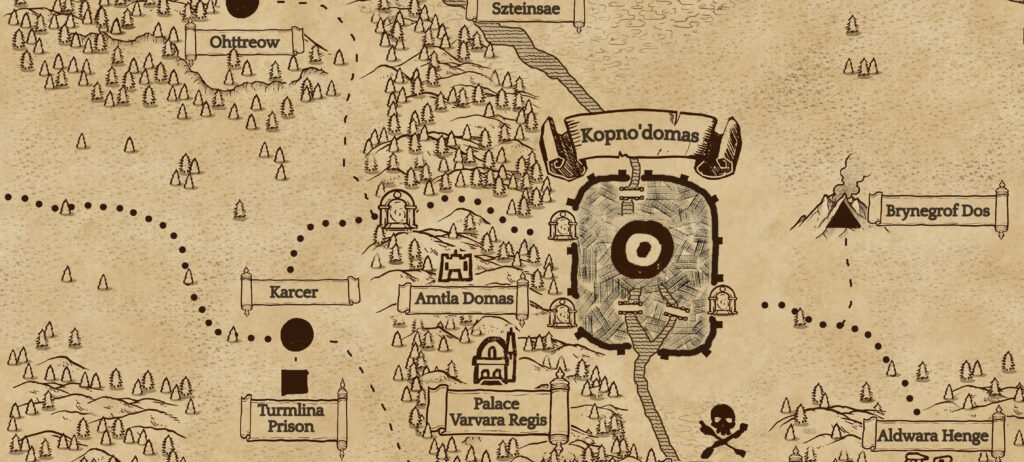
Almost two years ago I started running a Dungeons & Dragons campaign using the Fifth Edition Rules. When I started, I hadn’t run a game in over a decade, and I wouldn’t call my previous games all that successful. Sure, we had fun at the time, I even wrote some fiction set in that world (like The Princess and The Brewer, or A Beggar’s Tale) but I didn’t really grasp the core skills of how to keep a game going, how to incorporate the players and their characters into the ongoing plot, and how to keep the focus on what happens at the table and not get bogged down in pointless worldbuilding. I vowed to do better in this new game. I had learned a lot over the years about how to keep things interesting, what level of preparation is necessary, and how to make the game collaborative, not just one person’s (the dungeon master’s) vision.
A huge help to me was Matt Colville’s “Running the Game” series on YouTube. I even modified his “Delian Tomb” basic adventure and used it for an early session. Good stuff! Also good: The Alexandrian, who was the first person to introduce me to the idea to prep situations not plots, or the Three Clue Rule for creating mysteries the players will love.
I started to prep for that first session by pulling out the campaign maps and notes I had used a decade ago and using them as a starting point. I used the old games notes as the recent past on which to build, to give a sense of history and a living world, and then dropped the new characters into the middle of things. I had factions, situations, people with goals… and no idea where it will all lead. I let the player’s actions be the inputs; how does what the players do change the world and affect the various factions?
We had some player changes over that time but have settled into a core group of five characters. In our last session, a couple of months ago, they had managed to defeat an evil sorcerer who was trying to imbue a giant brass golem with arcane and powerful energy. A big boss battle, in other words.
One of the players has wanted to run his own game, so we arranged to have him run some adventures for a few sessions to give me a break and let me play my own character. That’s been going well; Vic’s a natural gamer, understands story and plot, and it’s been fun seeing him come to the table with his own ideas.
That being said, after this next session, it seems likely that we will be moving back to my own campaign, so I’ve been thinking about how to restart the game. I now have a group of 4th level characters, who know a bit about the world they live in and the various factions, who have worked together and started to gel as a team. They each have their own backstories and goals but also have friendship and the bonds of pulling through tough situations. My intention is to come up with a summary of what’s transpired so far, and a recap of the groups, cults, and factions they have been ignoring while tracking down and killing the sorcerer. Those other leaders have not been sitting on their thumbs, no; they are now a little more powerful, and a few steps further along toward their own goals.
Again, the design philosophy I intend to follow: I’m going to create situations, and let the players interfere (or support!) those other people’s goals, and just see where it leads.
I may be running the game, but I can also be surprised by what happens next. This is the best and most successful campaign I’ve ever run, and I can’t wait to get back to it.